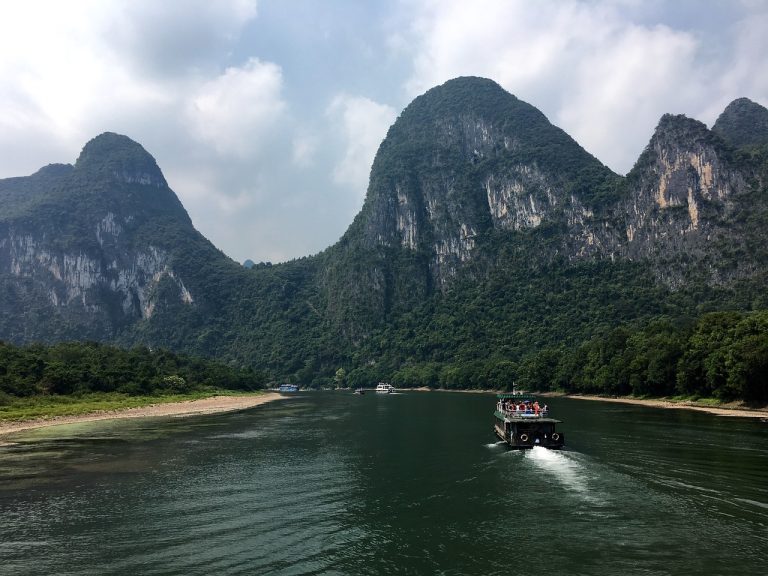Guilin China Video
Social and Cultural Impact of Guilin China
Guilin, located in the Guangxi Zhuang Autonomous Region of China, is a city known for its stunning natural landscapes and rich cultural heritage. The city’s unique combination of picturesque scenery and vibrant cultural traditions has made it a popular destination for both domestic and international tourists. In this article, we will explore the social and cultural impact of Guilin, focusing on ten key aspects that define the city.
Natural Beauty
- Karst Mountains: The karst mountains of Guilin are renowned for their unique limestone formations, creating a breathtaking backdrop for the city. These natural wonders have inspired countless artists and poets throughout history.
- Li River: Flowing through Guilin, the Li River is a major attraction, known for its crystal-clear waters and picturesque landscapes. The river has played a significant role in shaping the city’s culture and economy.
- Elephant Trunk Hill: One of Guilin’s iconic landmarks, Elephant Trunk Hill, resembles an elephant drinking water from the Li River. This natural wonder has become a symbol of the city’s beauty.
Guilin China Image 1: 
Traditional Cuisine
- Yangshuo Beer Fish: This local specialty combines fresh fish from the Li River with a savory sauce made from Guilin’s famous Yangshuo beer. It is a must-try dish for visitors.
- Guilin Rice Noodles: Rice noodles are a staple of Guilin’s cuisine and can be found in various forms, including stir-fried, soup-based, or mixed with vegetables and meat.
- Oil Tea: Oil tea, a traditional drink in Guilin, is made from tea leaves and fried peanuts. It is a popular choice for breakfast or as a snack.
Local Festivals
- Water Splashing Festival: Celebrated by the Zhuang ethnic minority, this festival marks the New Year and involves joyful water fights to wash away bad luck and welcome the coming year.
- Double Seventh Festival: Also known as the Chinese Valentine’s Day, this festival celebrates the annual meeting of the legendary cowherd and weaver girl, symbolizing love and romance.
- Guilin International Tourism Festival: Held annually, this festival showcases Guilin’s cultural diversity through various art performances, exhibitions, and traditional activities.
Guilin China Image 2: 
Historical Sites
- Reed Flute Cave: Known as the “Palace of Natural Arts,” this limestone cave is adorned with colorful stalactites and stalagmites, creating a surreal underground spectacle.
- Seven Star Park: The largest comprehensive park in Guilin, Seven Star Park offers visitors the chance to explore ancient temples, caves, and enjoy stunning natural scenery.
- Guilin City Museum: Located in the heart of the city, the Guilin City Museum showcases the history and culture of Guilin through a vast collection of artifacts and exhibits.
Traditional Arts and Crafts
- Scroll Painting: Guilin is known for its traditional scroll paintings, which often depict the city’s landscapes, rivers, and cultural scenes. These intricate artworks are highly valued.
- Embroidery: Guilin’s embroidery is renowned for its delicate craftsmanship and vibrant colors. It is often used to create beautiful clothing, accessories, and decorative items.
- Bamboo Crafts: Bamboo crafts, such as woven baskets and carvings, are an integral part of Guilin’s cultural heritage and reflect the city’s close connection with nature.
Guilin China Image 3: 
Local Dialects
- Guilin Dialect: The Guilin dialect, a branch of the Cantonese language, is widely spoken by the local population. It adds to the city’s unique cultural identity.
- Zhuang Language: The Zhuang ethnic minority, one of the largest ethnic groups in Guangxi, has its own language, which is an important part of the region’s cultural heritage.
- Minority Languages: Guilin is home to several ethnic minority groups, each with its own distinct language and cultural traditions, contributing to the city’s diverse linguistic landscape.
Traditional Music and Dance
- Sanjo Dance: Sanjo dance is a traditional folk dance in Guilin, characterized by its graceful movements and vibrant costumes. It is often performed during festivals and celebrations.
- Guilin Reed Flute: The reed flute, a traditional musical instrument made from reeds, is closely associated with Guilin. Its melodious tones can be heard in various traditional performances.
- Yangshuo Impression Sanjie Liu: This grand outdoor performance on the Li River showcases the natural beauty of Guilin while incorporating traditional music, dance, and colorful lighting effects.
Education and Research
- Guilin University of Electronic Technology: Known for its excellence in electronic engineering, this university plays a significant role in Guilin’s technological advancement.
- Guangxi Normal University: As one of the top universities in Guangxi, Guangxi Normal University contributes to the development of education and research in Guilin.
- Guilin Institute of Tourism: With Guilin’s status as a popular tourist destination, the Guilin Institute of Tourism focuses on training professionals in the tourism industry.
Environmental Conservation
- Elephant Conservation Center: Guilin is home to an elephant conservation center that works to protect and preserve the endangered Asian elephants.
- Karst Landscape Protection: Recognizing the importance of preserving its unique karst landscapes, Guilin has implemented measures to protect and conserve these natural wonders.
- Li River Clean-up Campaigns: Various organizations and local communities actively participate in clean-up campaigns to maintain the pristine condition of the Li River and its surrounding areas.
Tourism Development
- Infrastructure Improvement: Guilin has continuously invested in improving its transportation and accommodation infrastructure to accommodate the growing number of tourists.
- Job Creation: The tourism industry in Guilin has created numerous job opportunities for the local population, contributing to the city’s economic growth.
- Cultural Exchange: Tourism has facilitated cultural exchange between Guilin and visitors from around the world, fostering a deeper understanding and appreciation of different cultures.
Conclusion
Guilin China is not only a city of extraordinary natural beauty but also a place where vibrant cultural traditions thrive. The social and cultural impact of Guilin can be seen in its stunning landscapes, mouthwatering cuisine, colorful festivals, and rich historical heritage. The city’s commitment to environmental conservation and tourism development ensures that future generations will continue to appreciate and benefit from the unique charm of Guilin.
References
– travelchinaguide.com
– chinahighlights.com
– guilinchina.net







